I paint ‘101’ style using only brushes with just a quick spray of clear coat after to seal in the decals. This method results in loss of detail, particularly where more than one coat is required, and will no doubt look ghastly to airbrush enthusiasts; but I paint for purely for enjoyment and a bit at a time here and there. So long as things are neat, I’m happy with the end result.
Airfix 1/72 Folland Gnat T.1 ‘Yellowjacks’.
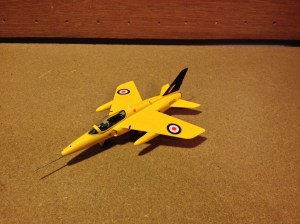
The ‘Yellowjacks’ display team flew the diminutive Gnat T.1 trainer from 1963 until 1964 from No 4 Flying Training School. Along with numerous other group level display teams, they were disbanded and formed into the official ‘Red Arrows’ display team in 1965 where the Gnat remained the mainstay until 1979.
Academy 1/72 B-24H Liberator 2S-0 ‘Aries’ 42-52693.
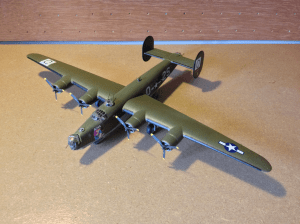
Academy 1/72 B-24H Liberator 2S-0 ‘Aries’ 42-52693 of 834th Bomb Squadron assigned to the 486th USAAF Bombardment Group, U.S. 8th Air Force.

Each bomber in the squadron was painted as a sign of the Zodiac by Cpl. Brinkman. The 834th completed 49 missions during their tour of duty and did not lose a single B-24H as a result of enemy action.
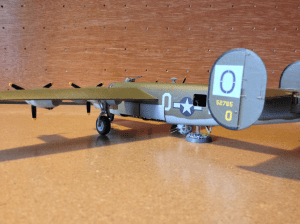
Despite squeezing in lead where ever possible, like most nose wheel designs, this kit proved decisively tail-heavy and requires a tail stand for support.
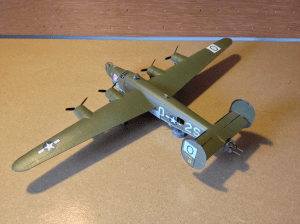
A more modern design than it’s main counterpart, the Boeing B-17, the B-24’s long thin ‘Davis’ section high aspect-ratio wing was designed to offer significant improvements in drag reduction. Indeed it did, but it was found to be unstable under heavy load/high altitude flight. With an increased take-off weight for each successive modification to the design, the B-24 could be quiet a handful to fly. While the Boeing B-17 was ‘hands-off’ stable at all altitudes it just didn’t have the payload range of the B-24. Which design was the better aircraft is still debated, but on numbers built and conflicts served in the B-24 wins hands down.
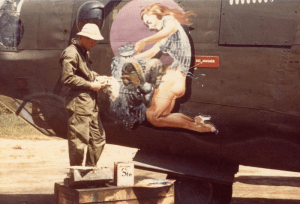
Cpl. Phillp S. Brinkman painting ‘Aries’ nose art onto B-24H, 42-52693, 0-2S at Sudbury, Sussex, April 1944. (Picture source: http://www.486th.org)
Aifix 1/72 Westland Sea King Mk43 HAR3.
Airfix 1/72 Spitfire MK1a.
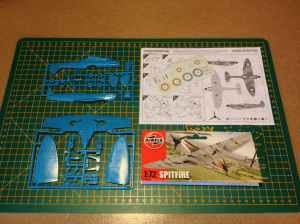
Spitfire Mk1a re-released by Airfix for a limited period using the original blue mouldings and packaged in the original style plastic bag.
Revell 1/72 Spitfire MkV.
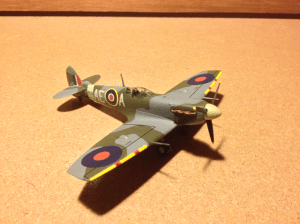
The Mk V spitfire was built in more numbers than any version and was fitted with increasingly powerful Rolls-Royce Merlin engines. With the ‘B-Type’ wing (as per this kit) the aircraft was armed with two 20 mm Hispano Mk II cannons and four .303 Browning machine guns.

Clipped wings gave improved low level maneuverability in an effort to keep up with rapid aircraft improvements made by the Luftwaffe.
Revell 1/72 Lancaster B.MK I W4964 WS-J ‘Johnnie Walker’.

Revell 1/72 Lancaster B.Mk I W4964 WS-J ‘Johnnie Walker’. This is the actual aircraft my Grandfather worked upon as ground crew with 9 Squadron, Bardney, Lincolnshire.

I’m not entirely sure if this aircraft would have been outfitted with the array of antennae I’ve attached, but as the aircraft out-lived many crews during it’s long flying career it’s entirely possible it would have been equipped with all the latest upgrades at one time or another.


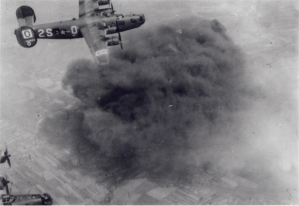



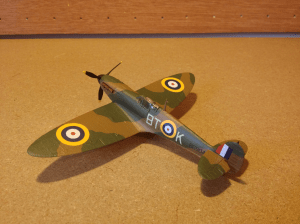
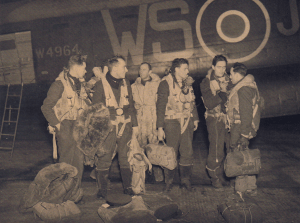
Pingback: 01: Introduction/About Me | extreme3d